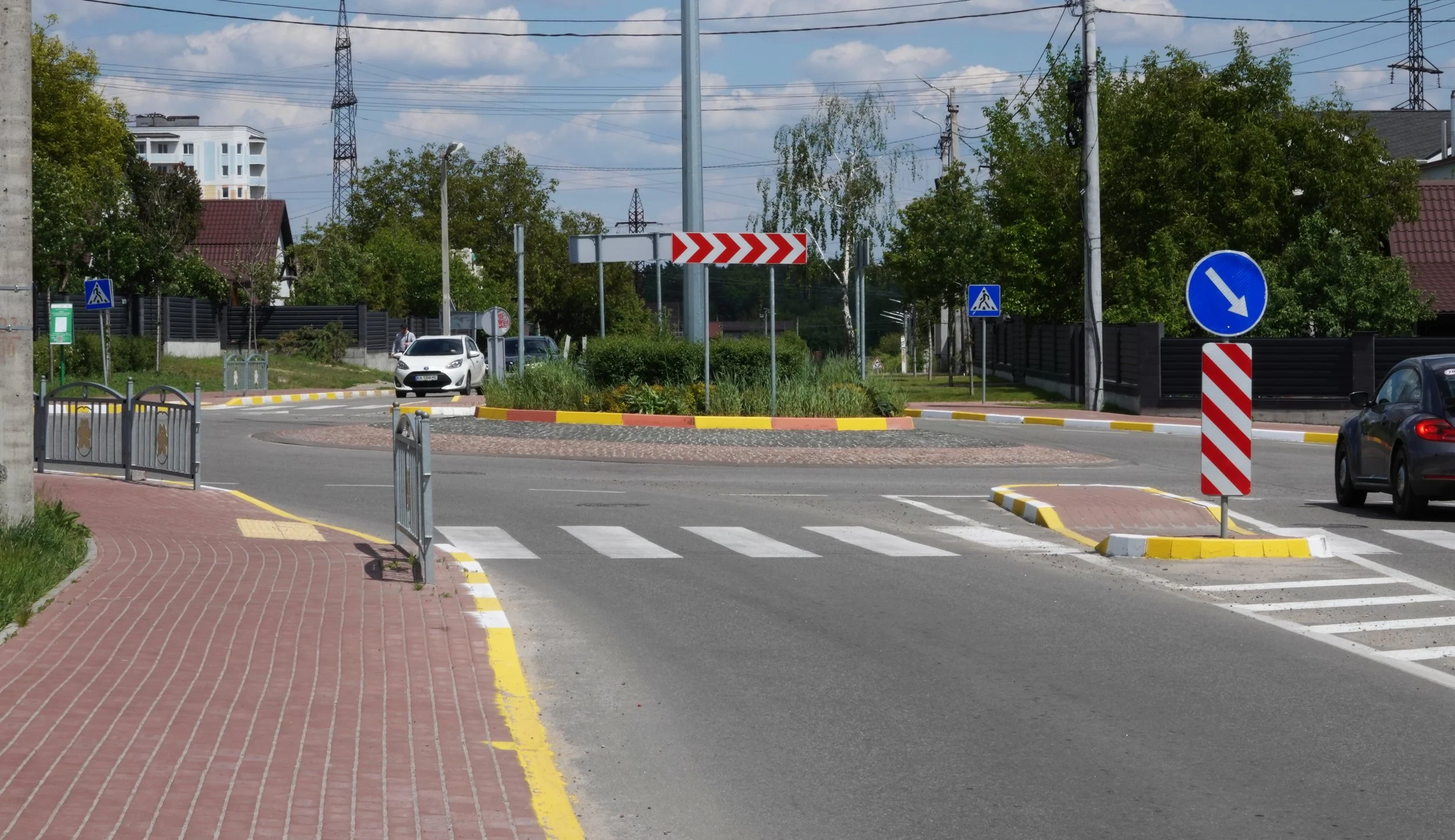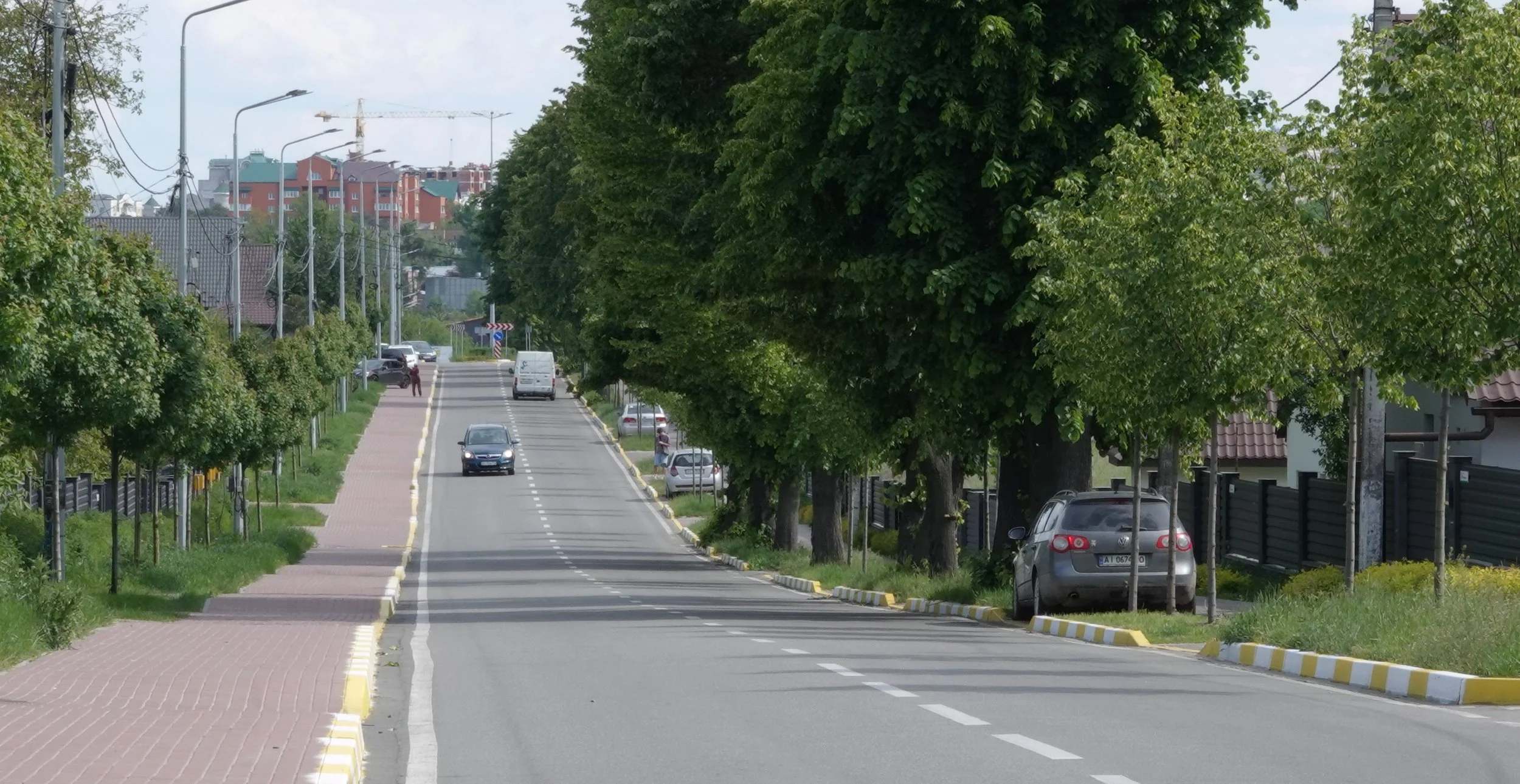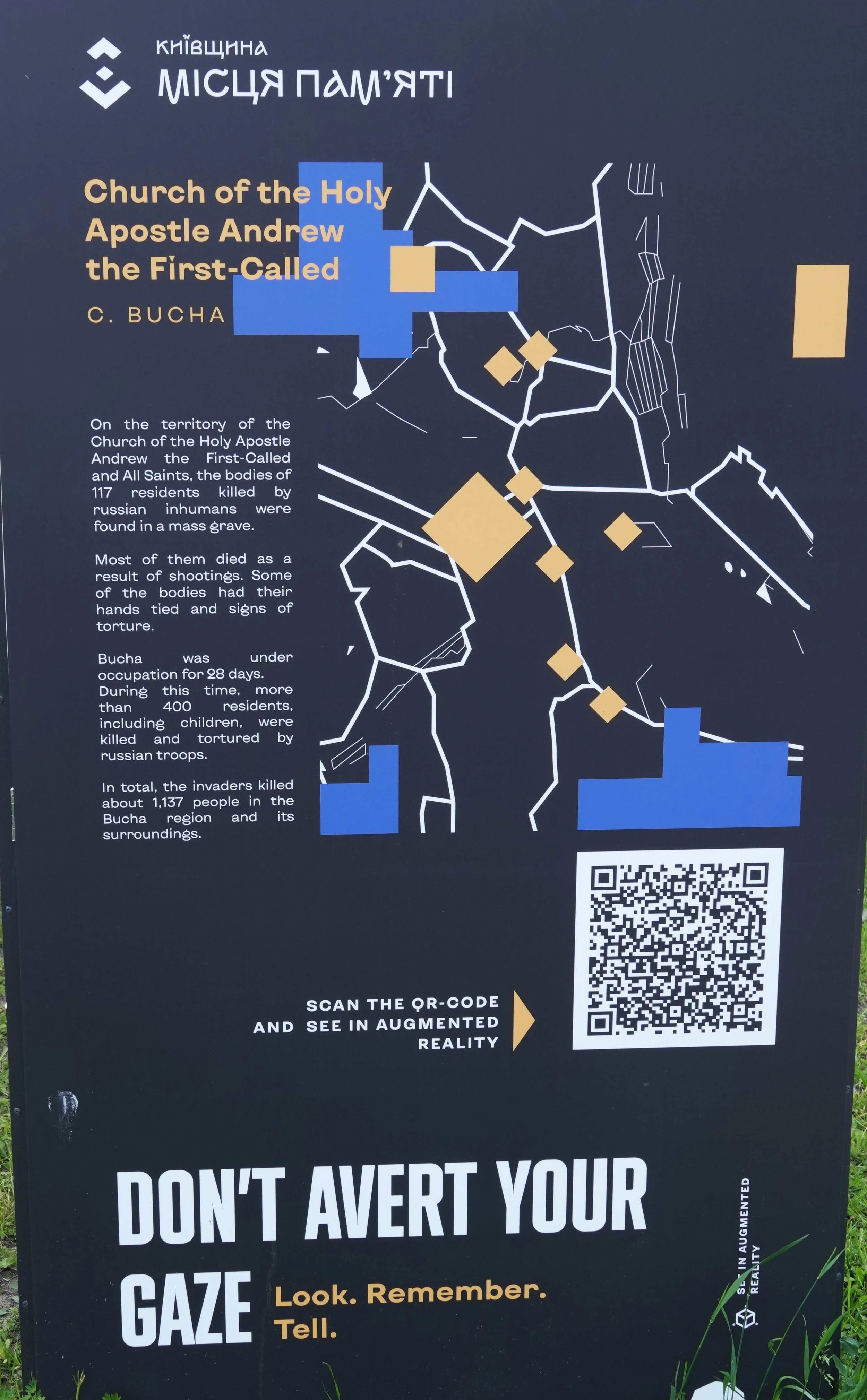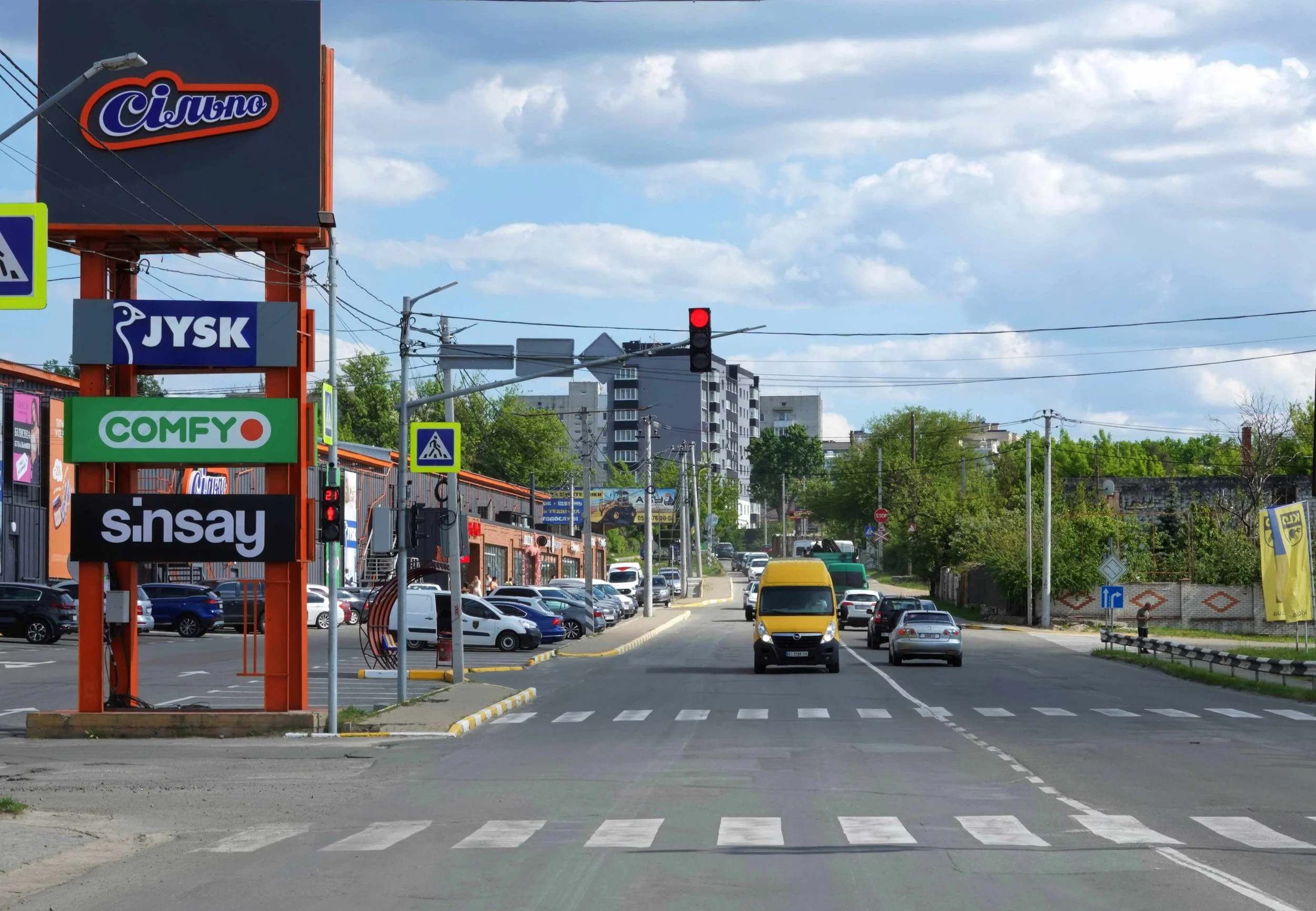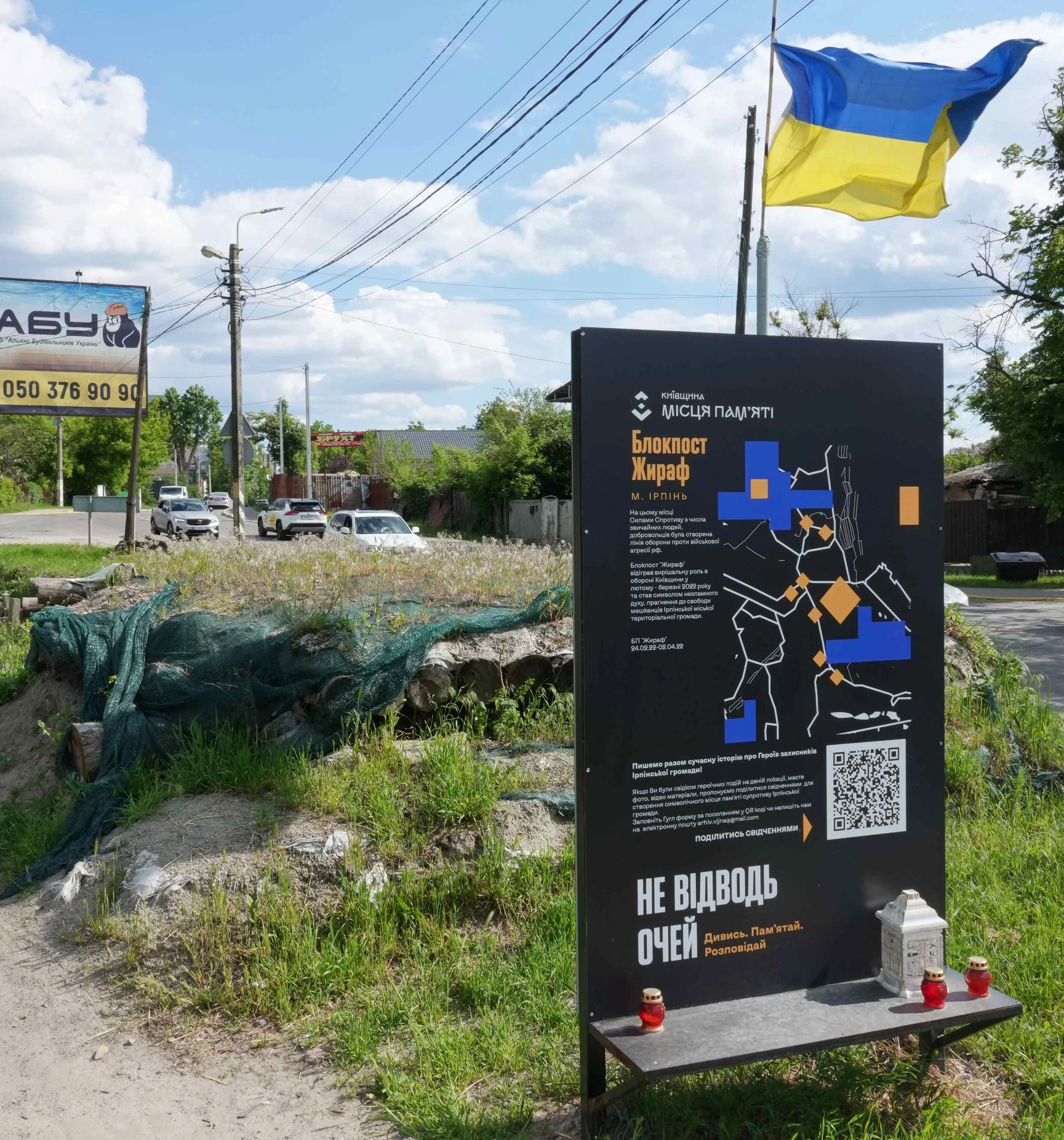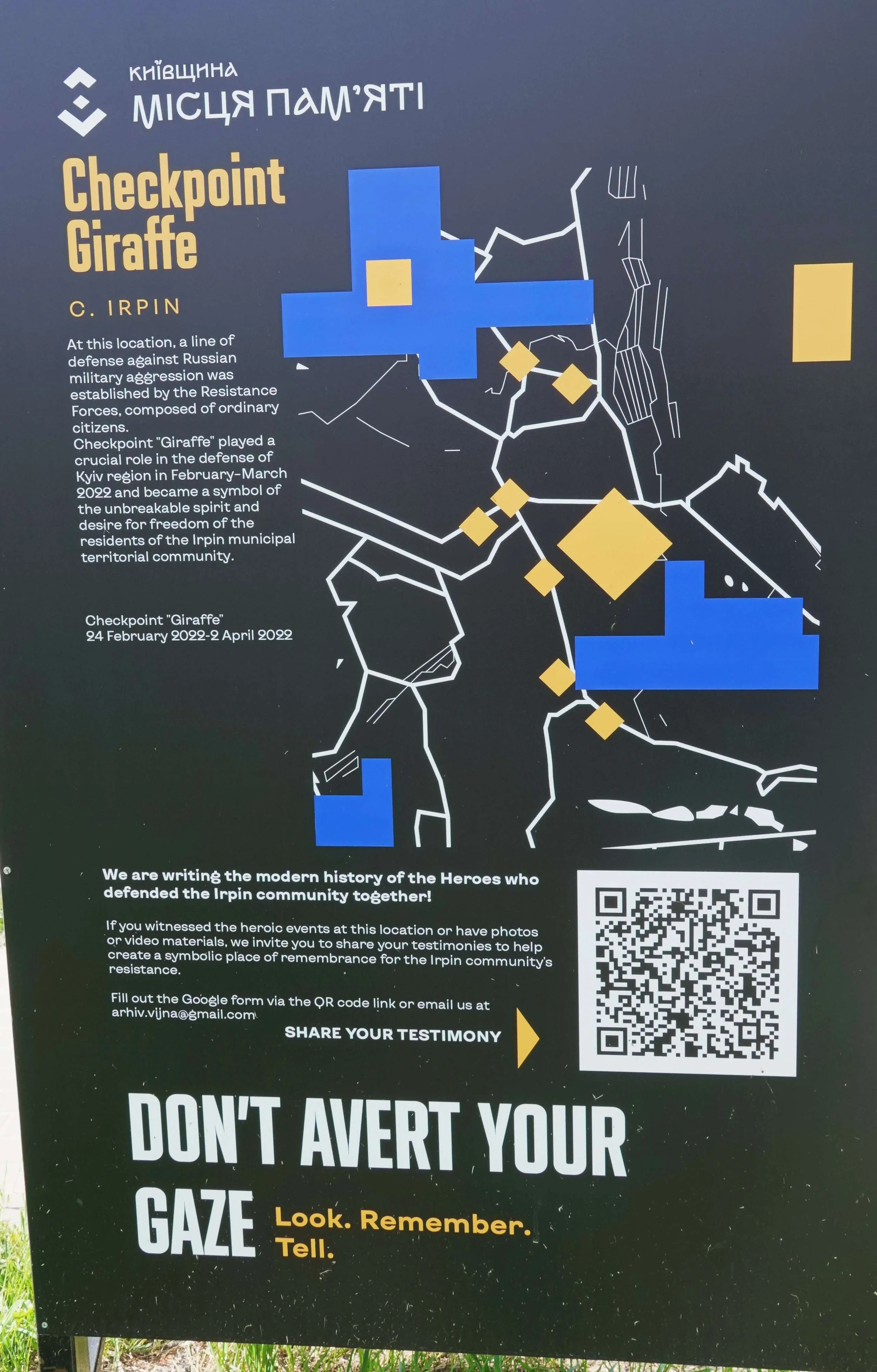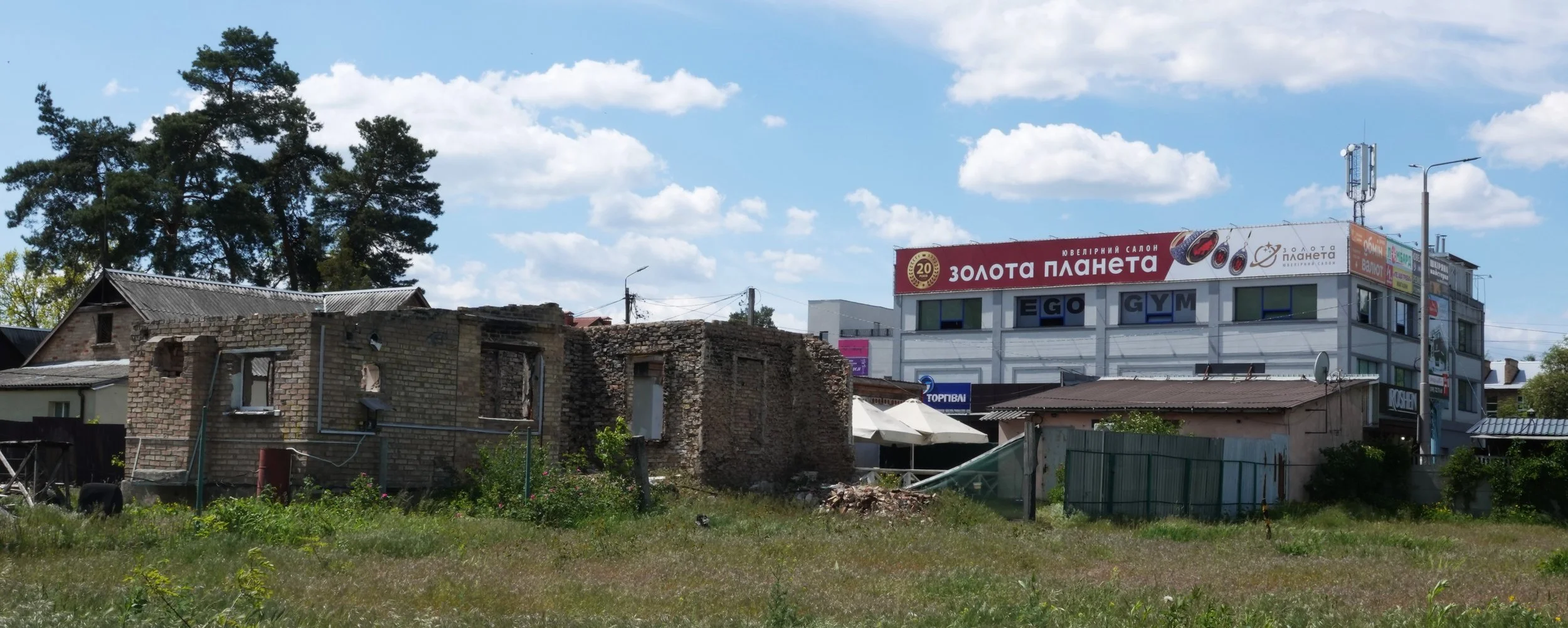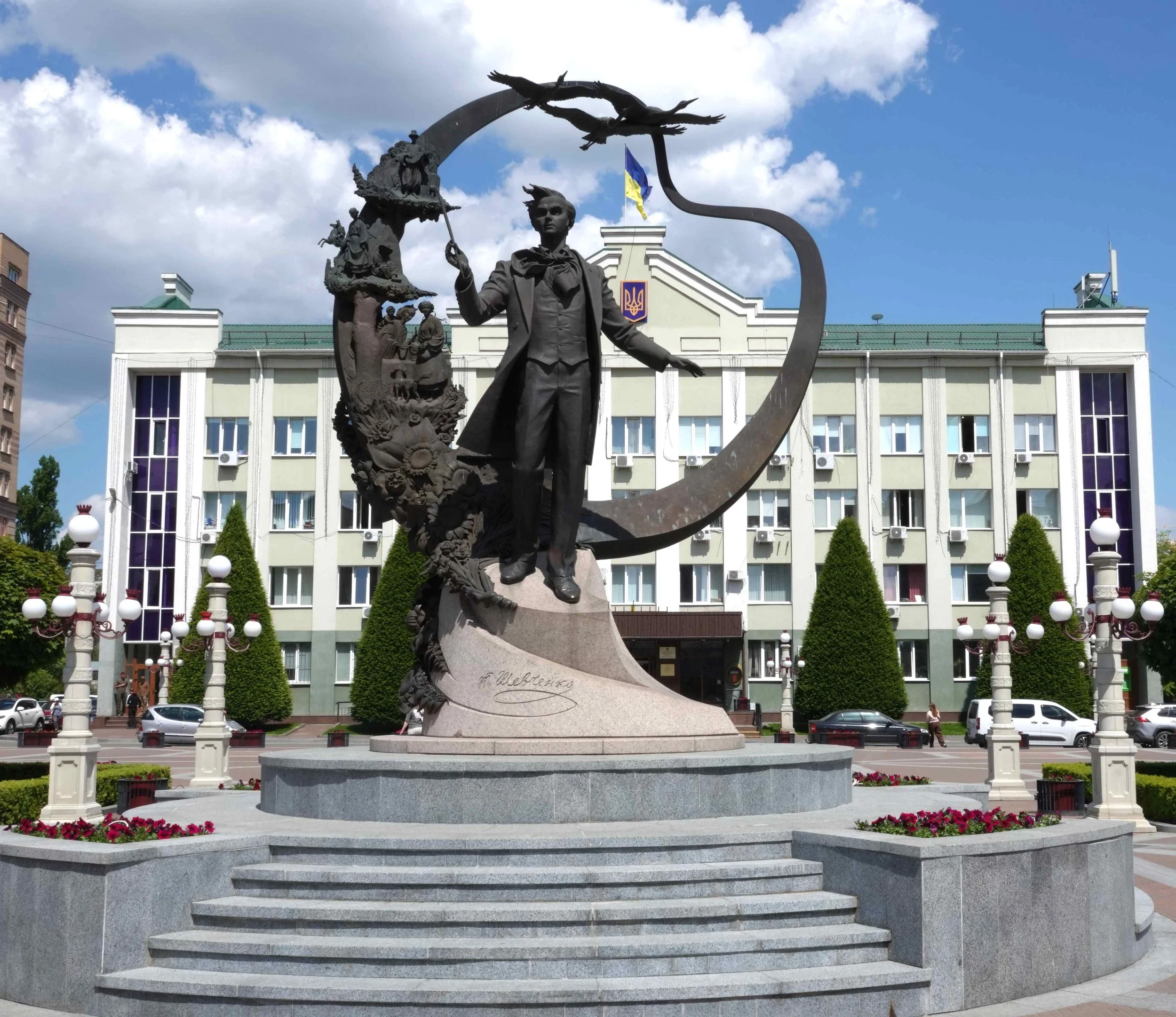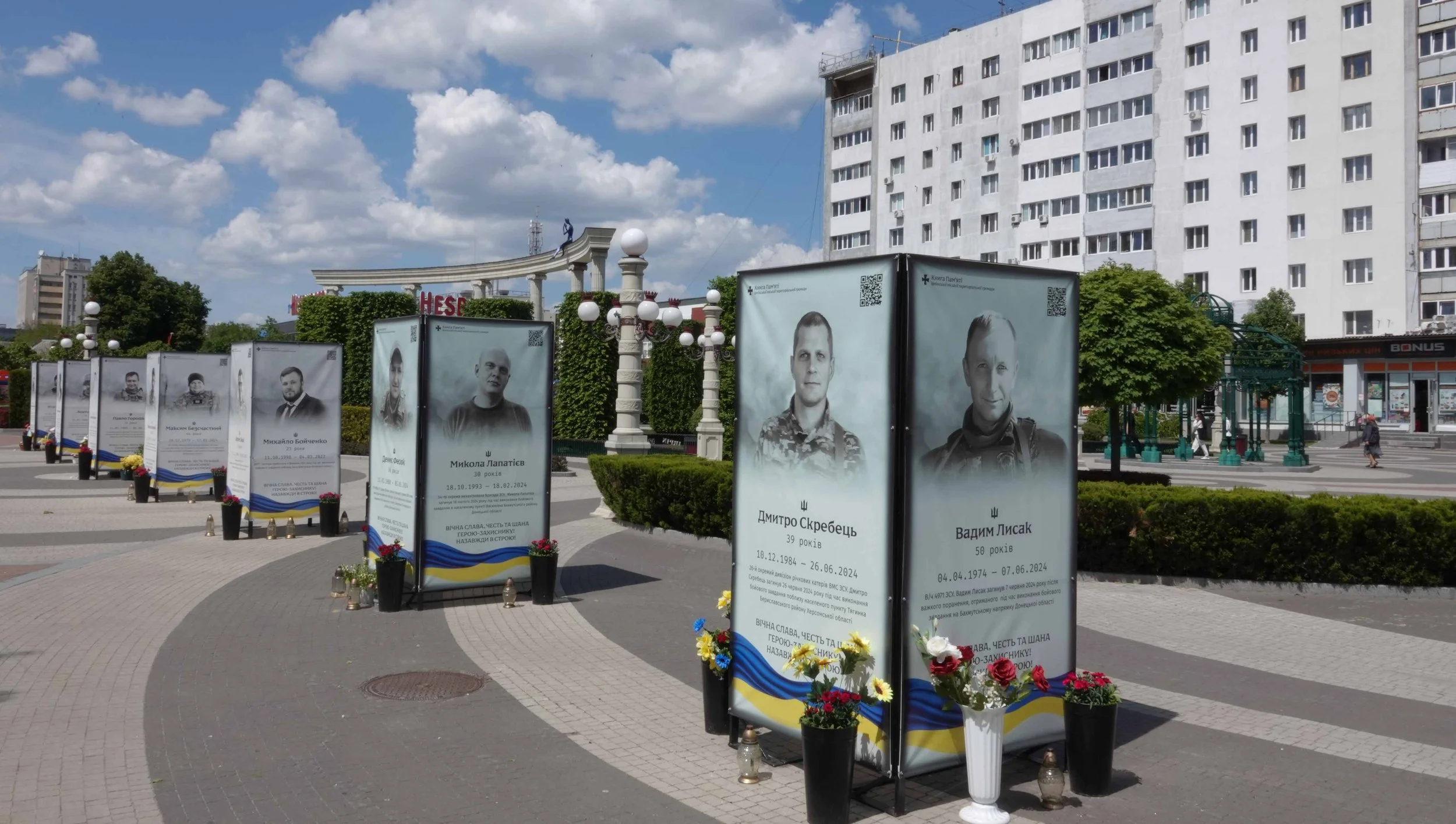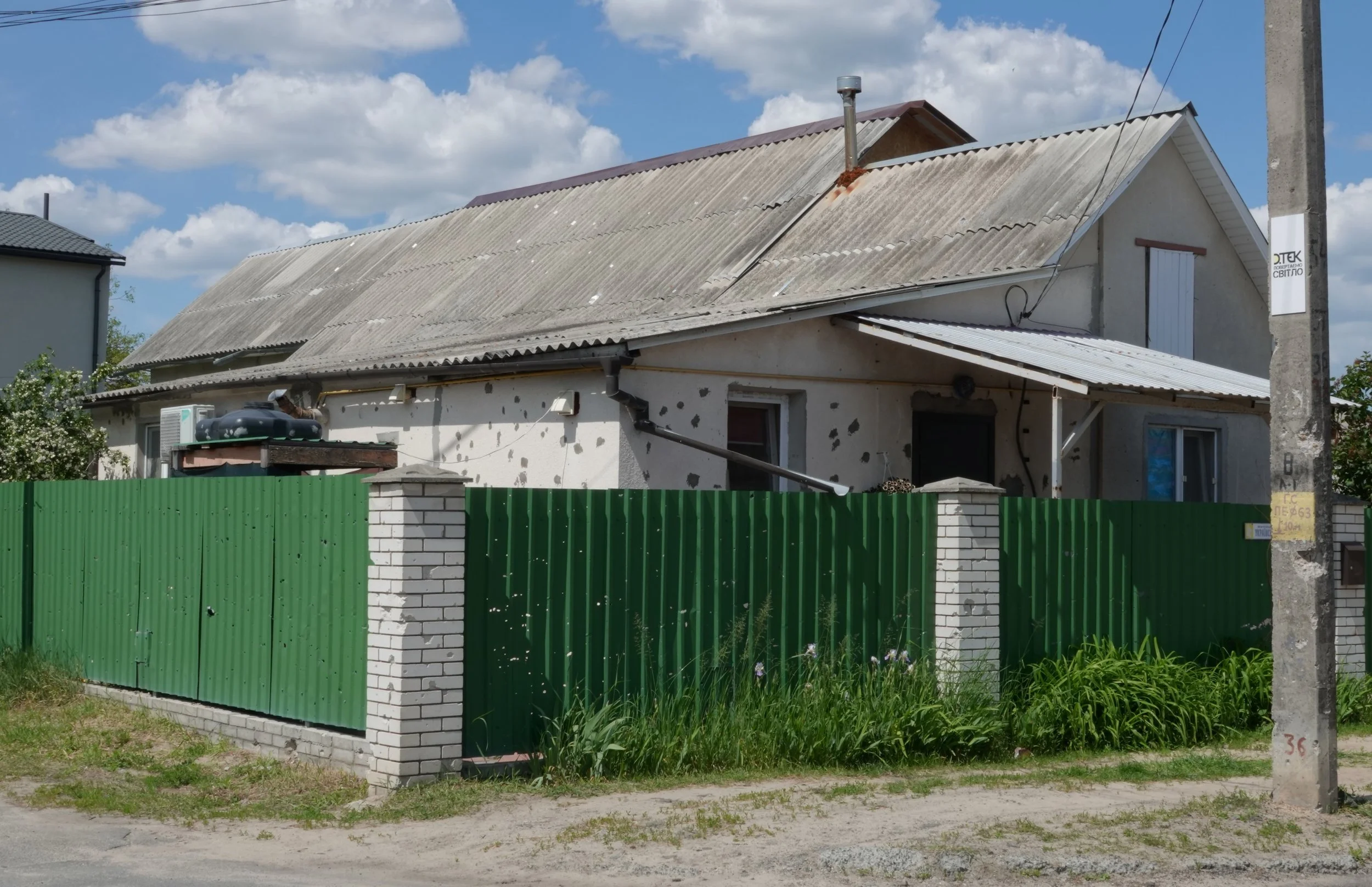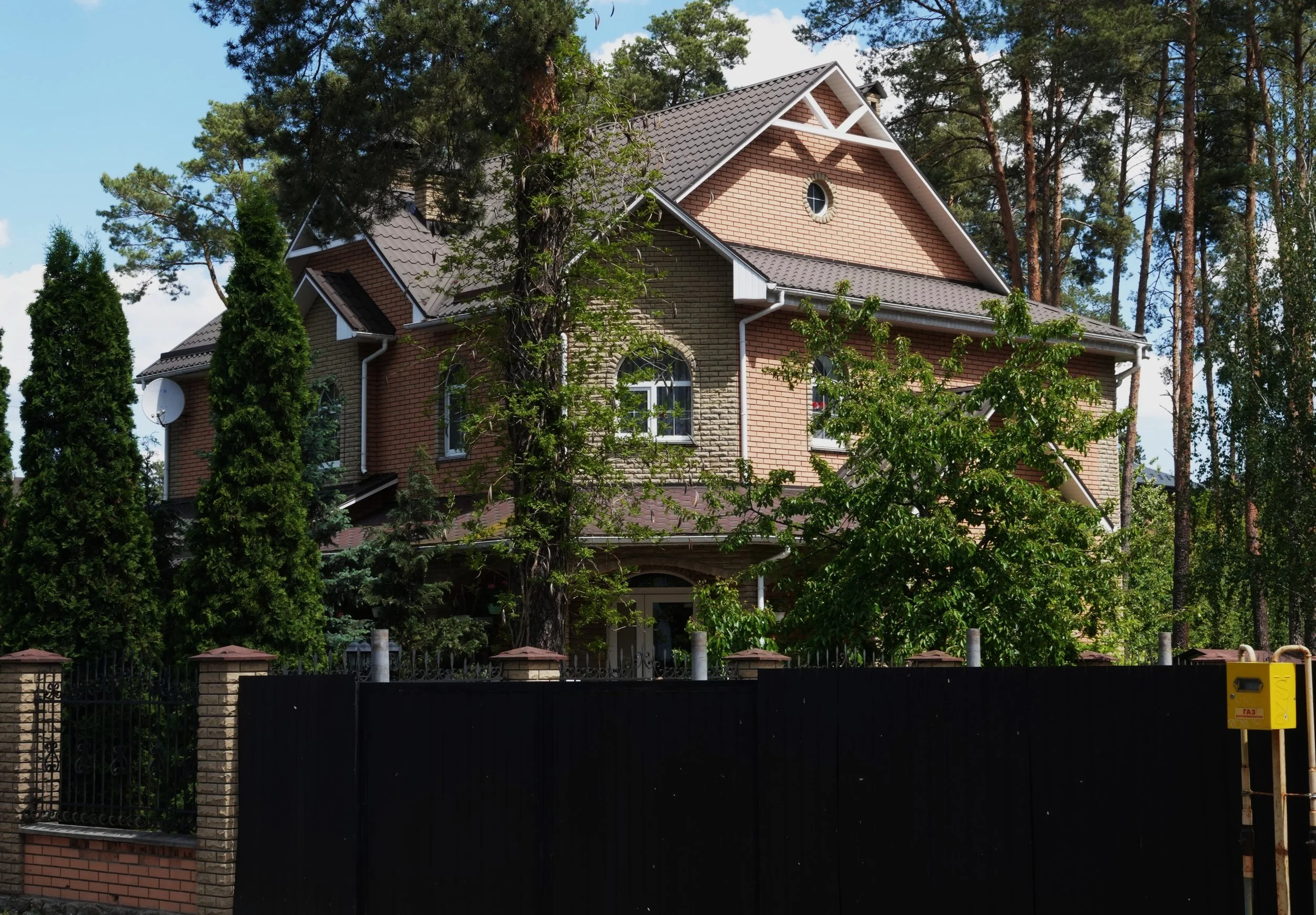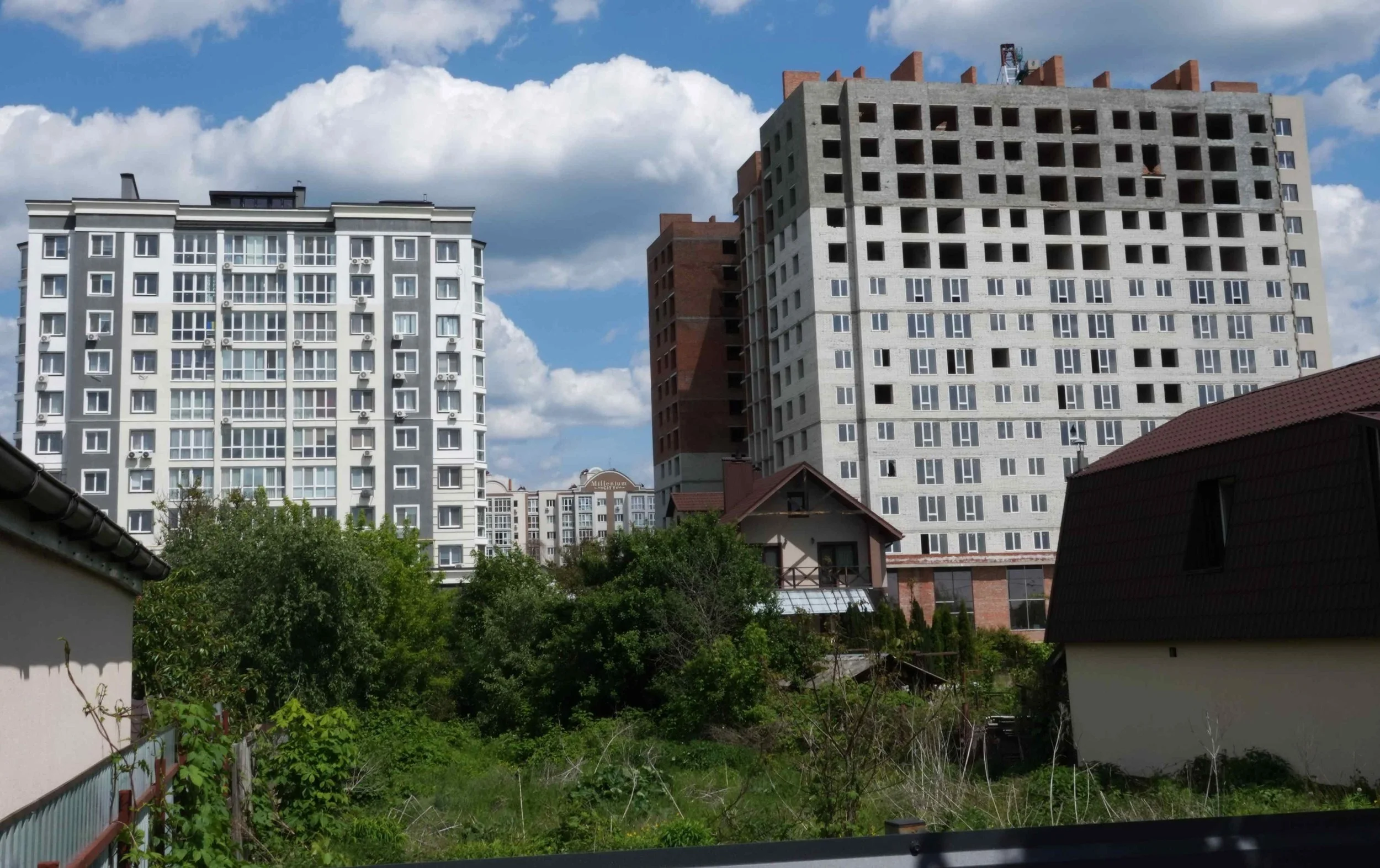Massacre, Resilience & Rebuilding in the Suburbs of Kyiv
At the Car Graveyard in Irpin, now a war memorial. Numerous cars were fired upon and their occupants killed as they tried to flee along the ring road directly over my left shoulder.
On 22 February 2022, Russian troops invaded Ukraine across multiple fronts. Kyiv is some distance from the Russian border but very close to the Belarus border, and Belarus’ dictator allowed Russian troops to invade from his country. That brought Russian troops into Kyiv’s suburbs almost immediately.
On 25 February the first Russian troops arrived in the northwestern suburb of Bucha (population 37,000), and were seen looting an apartment building there. Overextended and unarmoured, they were wiped out — only 3 of 80 Russian troops survived.
On 27 February Russian troops arrived in force and entered Bucha, shooting fleeing civilians. A tank battle ensued with dozens destroyed, while Ukrainian infrantry engaged Russian paratroopers. Witnesses reported Ukrainian civilians attacking Russian vehicles with Molotov cocktails. By 28 February over 200 Russian vehicles had been destroyed. This would prove instrumental in saving Kyiv.
On 2-3 March, humanitarian aid was successfully delivered and nearly 2,000 civilians were evacuated, as the two armies battled for control of Bucha and neighbouring Irpin (population 65,000) to the south,
On 3 March, Ukrainian forces raised the Ukrainian flag at Bucha city hall and claimed control of the city, but the battle continued. On the same day two Russian Su-25 jets struck a residential building in Irpin, killing a child. One jet was shot down.
By 5 March, Russian forces were largely in control of Bucha, and shooting civilians who tried to evacuate.
On 6 March Russian troops captured part of Irpin. 8 civilians including 2 children were killed when their car was shelled as they tried to flee.
On 9 March Ukrainian forces evacuated 20,000 civilians from the Kyiv Oblast (the region surrounding the capital), including as many in Bucha and Irpin as Ukrainian forces could reach. Russian troops were seen patrolling part of Irpin that day.
In the map below you can see Bucha and Irpin circled in blue just northwest of Kyiv as things stood on that date. The red diamonds are Russian units.
You can see Bucha and Irpin circled in blue just outside Kyiv’s city limits to the northwest.
On 12 March the Bucha City Council announced that Russian troops were in control of the city, and shooting at civilians who tried to leave their homes. Nonetheless, some civilians were able to escape.
On 13 March, residents of Bucha buried 67 bodies in a mass grave, their only option with the bodies decomposing and the Russians firing on anyne venturing outside. On the same day Russian forces fired on a car in Irpin carrying foreign journalists. One was killed and two wounded.
On 14 March a member of Irpin City Council stated that half the town was occupied by Russian forces.
On 16 March, Ukrainian forces counterattacked but were unable to dislodge Russian forces. For the next two weeks both cities were constant war zones, with numerous civilians shot by Russian forces as they sought food and water.
On 28 March, Irpin’s mayor stated that 80% of the city was now back under Ukrainian control. Russian killings of civilians dramatically accelerated as the Ukrainian army closed in.
On 29 March Russia announced that it was abandoning its attempt to capture Kyiv. Russian forces retreated under heavy fire from the Ukrainian army.
By 31 March both towns were firmly under Ukrainian control.
In the coming days over 1,000 civilian bodies were recovered, many with their hands tied behind their backs and showing signs of torture, killed by a gunshot to the head rather than artillery fire. 280 were exhumed from in the mass grave in Bucha that is now a memorial site.
Rebuilding began almost immediately. Despite the risks of further damage, residents wanted their lives back. To date there has been no further fighting in this area — Putin’s focus is capturing the East of the country.
The massacre on Yablunska Street. Dozens of POWs and civilians were executed here over several days with a gunshot to the head. Using camera footage and phone records, the New York Times was able to pin the murders here on Russia’s 234th Paratrooper Batallion. Putin of course insists the civilians were killed after Ukrainian forces retook the town, but satellite photos show the bodies lying in the streets when Russia was in complete control.
The same spot on the date of my visit, 22 May 2025
Also on Yablunska Street, about 200 metres from the previous photo
Same spot on the day of my visit. If you turn left onto Vokzalna Street at the roundabout there, you soon come to the site of the next photo…
Probably the most famous image from Bucha, this is a view of Russian tanks destroyed on 27-28 February on Vokzalna Street, the main north-south road connecting Irpin and Bucha. This destruction was pivotal in stopping the advance on Kyiv.
Vokzalna Street on the day of my visit, 22 May 2025
Plaque on Volkzalna Street. The other side has the same information in Ukrainian.
Exhuming bodies from the mass grave after the liberation, next to the Church of the Apostle Andrew
The mass grave
The site of the mass grave by the church is now a memorial
At the memorial site. The other side of the plaque is in Ukrainian.
Giraffe Mall on the the border between Bucha and Irpin on Vokzalna Street. The sign in the middle of the street says “MINES”
Giraffe Mall on the day of my visit
Checkpoint Giraffe by the Giraffe shopping mall at the border between Bucha and Irpin, manned primarily by local civilian militia during the battle
Irpin just after the liberation
Irpin on the day of my visit
Irpin city hall on the day of my visit, fronted by a statue of Ukraine’s national poet Taras Shevchenko
Memorial in Irpin to local soldiers killed over the past three years of war
Bullet holes filled in in Irpin
In Soviet times everyone wanted to live in the city centres, and suburbs like Bucha and Irpin were usually a mix of lower-working-class matchbox apartment buildings, and modest dachas (summer homes) for well-off urbanites. But since the end of Communism, many wealthy have adopted the Western concept of a big primary home in the ‘burbs. This one is in Irpin; to what extent it was damaged and restored I don’t know, because in many cases one street was devastated while an adjacent street was untouched.
Rebuilding continues. Architects from all over the world volunteered to assist. Of course any of these new buildings could be hit at any time in an air raid, but people want their lives back.
Visiting Irpin and Bucha from Kyiv is fairly easy. Commuter buses to Irpin depart from Minska metro station in Kyiv; buses to Irpin depart from Akademmistechko metro station. The sites of interest are spaced very far apart, but you can hire taxis cheaply using Bolt (Uber isn’t really used in Ukraine, but Bolt is everywhere) — a local ride will usually cost under $2. Or if you can read destinations in cyrillc, then you can cover a lot of ground using local buses.





